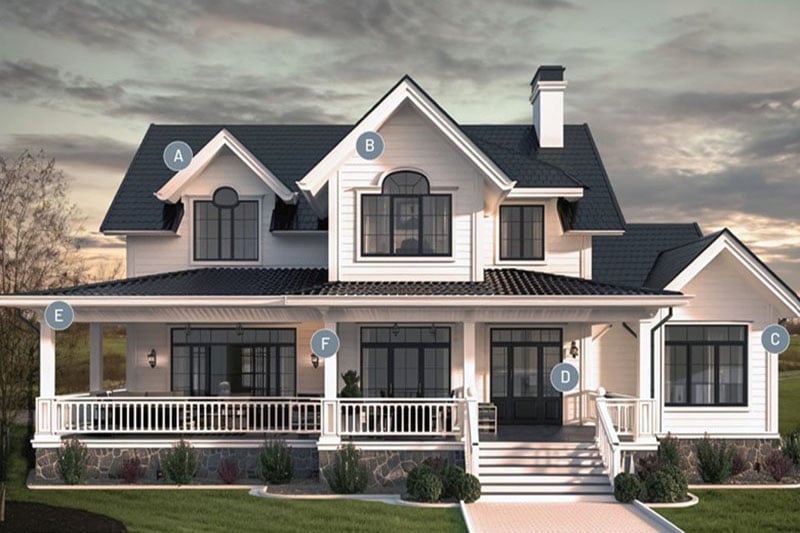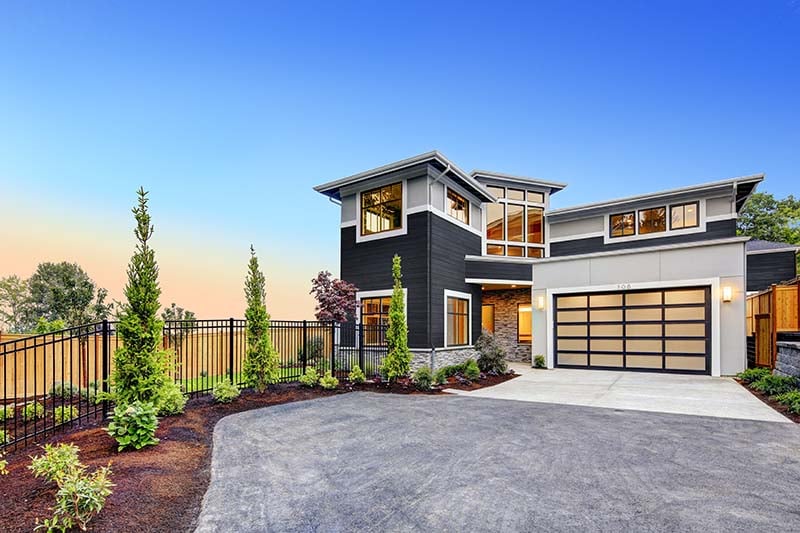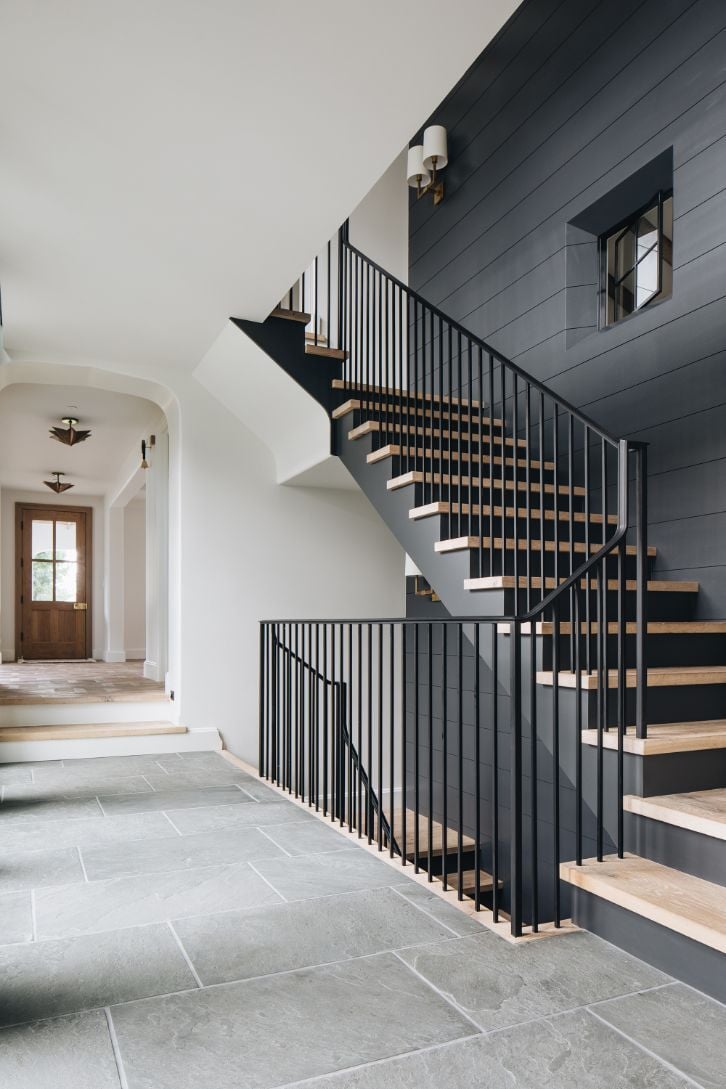How To Choose The Right Exterior Trim For Your Next Project
Our primed trim products are expertly sanded and primed, delivering a consistent, ready-to-finish surface for your next project. Available in good,...
4 min read
Edge : Aug 11, 2025 10:13:44 AM
 You've noticed something's not quite right with your exterior trim. Maybe the paint's peeling again despite touching it up last year. Or perhaps there's a small gap where everything used to fit snugly together. Now you're wondering: is this normal wear and tear, or is it time to take action?
You've noticed something's not quite right with your exterior trim. Maybe the paint's peeling again despite touching it up last year. Or perhaps there's a small gap where everything used to fit snugly together. Now you're wondering: is this normal wear and tear, or is it time to take action?
The good news? Most trim issues start small and give you plenty of warning before they become expensive problems. Let's walk through what to look for and help you decide whether you're dealing with simple maintenance or something more significant.
Every home's exterior trim faces a daily battle against weather, and some wear is completely normal regardless of material. Whether you have wood, PVC, vinyl, aluminum, or composite trim, each material has its own aging patterns and failure modes. The trick is knowing when that wear crosses the line from "typical aging" to "time for replacement."
Wood trim commonly shows paint wear and minor seasonal movement. PVC and vinyl trim might develop slight color fading or minor scuffs. Aluminum trim can show small dents or scratches from impact. These are all normal signs of aging.
However, think of your exterior trim like the tires on your car. A little wear is expected, but certain signs mean it's time to act before you're stranded on the side of the road – or in this case, dealing with water damage inside your walls.

Take a close look at where your trim pieces meet, especially around window corners. Small seasonal gaps are normal as materials expand and contract, but if you can slide a business card into these spaces, or if gaps that used to close up in different weather now stay open year-round, your trim is telling you it's losing the battle.
These openings might look innocent, but they're like leaving a window cracked during a rainstorm. Water will find its way in, and once it does, the damage accelerates quickly.
We've all been there – you spend a weekend painting trim only to see it start peeling again within a year or two. If this sounds familiar, your paint isn't the problem. When paint repeatedly fails in the same spots despite using quality materials and proper prep work, it's usually because the underlying trim is absorbing moisture and can't provide a stable surface.
This is especially common with exterior wood trim that's reached the end of its protective lifespan. The wood starts acting like a sponge, expanding and contracting in ways that break even the best paint bond.

Stand back and look at your trim with fresh eyes. Does everything still look straight and crisp, or do you notice some pieces that appear wavy or bowed? Warped trim isn't just an aesthetic issue – it's compromised trim that can't do its job properly. This applies whether you have wood that's moisture-damaged, PVC that's warped from heat exposure, or aluminum that's been dented and pulled out of alignment.
Warped sections create low spots where water collects instead of running off. They also affect how well your windows close and can create air leaks that drive up energy costs. Even subtle warping often indicates internal moisture damage that will only get worse.
Here's a simple test that reveals a lot: gently press on different sections of your exterior window trim with your thumb or tap lightly with a screwdriver handle. Healthy wood trim should feel solid and sound hollow when tapped. If any areas feel spongy, soft, or sound dull when tapped, you've found decay that's compromised the structural integrity.
Soft spots typically develop where water tends to accumulate – near joints, around fasteners, or in areas with poor drainage.

Carpenter ants, termites, and other wood-boring insects don't randomly choose their targets – they're attracted to moisture-damaged wood. If you're finding small holes, sawdust piles, or actual insect activity around your trim, these pests are confirming what you might already suspect: the wood has moisture problems.
Even after dealing with the insects, the underlying conditions that attracted them usually remain until the trim is replaced and any moisture sources are addressed.
Quality caulk should last several years when properly applied. If you find yourself re-caulking the same spots annually, or if fresh caulk cracks and fails within months, the trim pieces are likely moving or deteriorating beyond what caulk can handle.
Chronic caulk failure is often an early warning sign that trim replacement is in your future, even if the trim still looks decent from a distance.
This one's subtle but important. Deteriorated exterior trim creates air leaks around windows that force your heating and cooling system to work harder. If you've noticed increased energy costs or rooms that are harder to keep comfortable, failed trim weatherproofing might be contributing more than you realize.
If you've identified one or two of these issues and they're minor, you might be able to address them with targeted repairs. But if you're seeing multiple red flags, or if problems keep returning despite your efforts, replacement is likely your most cost-effective long-term solution.
Here's the key question: are you spending more time and money maintaining your trim than you'd like? If so, it might be time to consider an upgrade to materials that require less maintenance and provide better protection.
The good news about needing trim replacement is that today's materials are significantly better than what was available even a decade ago. Modern high-performance options can give you the look you want with dramatically less maintenance and superior weather protection.
Think of it as upgrading from that old car that needed constant repairs to something reliable that just works. The initial investment pays dividends in reduced maintenance time and improved peace of mind.

If you're facing trim replacement, consider EvoTrim – engineered exterior trim that addresses the core issues that cause traditional trim to fail. Unlike standard wood trim, EvoTrim features finger-jointed and edge-glued construction for superior stability, and it's treated to its core with TRU-CORE® technology for protection against rot, mold, decay, insects, and termites.
Each board comes factory-primed with two coats of exterior primer, arriving ready for your final paint application. The engineered construction resists the warping, cracking, and moisture damage that creates many of the red flags we've discussed.
With a limited warranty that includes 40 years of protection against termite attack and fungal decay, EvoTrim is designed for homeowners who want a long-term solution rather than repeated maintenance cycles.
Ready to explore trim solutions that eliminate maintenance headaches while enhancing your home's protection and appearance? EvoTrim combines the beauty of traditional trim with modern engineering for lasting performance you can count on.

Our primed trim products are expertly sanded and primed, delivering a consistent, ready-to-finish surface for your next project. Available in good,...

When it comes to finishing the exterior of a home, trim plays a crucial role in both protection and aesthetics. While "trim" is often used as a broad...

When it comes to wood siding options, poplar might not be the first species that comes to mind—but it should be. This versatile hardwood is making...

Your entryway is the introduction to your home, and it shapes your guests’ first impressions. This area should be both welcoming and functional. In...